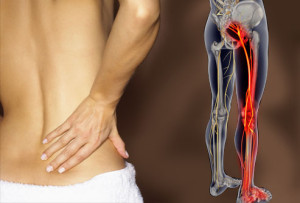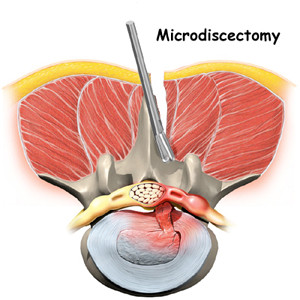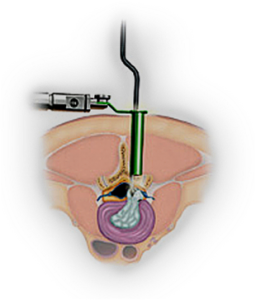Indications for Microdiscectomy Surgery
In general, if a patient’s leg pain due to a disc herniation is going to get better, it will do so in about six to twelve weeks. As long as the pain is tolerable and the patient can function adequately, it is usually advisable to postpone back surgery for a short period of time to see if the pain will resolve with non-surgical treatment alone.
If the leg pain does not get better with nonsurgical treatments, then a microdiscectomy surgery is a reasonable option to relieve pressure on the nerve root and speed the healing. Immediate spine surgery is only necessary in cases of bowel/bladder incontinence (cauda equina syndrome) or progressive neurological deficits. It may also be reasonable to consider back surgery acutely if the leg pain is severe.
A microdiscectomy is typically recommended for patients who have:
- Experienced leg pain for at least six weeks
- Not found sufficient pain relief with conservative treatment (such as oral steroids, NSAID’s, and physical therapy).
Consider using this space to introduce your page. Just click to add your own content.
You can use this page for anything you like, but we recommend focusing on one or two related topics to avoid confusing your readers. Remember that you can always add more pages if you need them.
What is done?
In a microdiscectomy disc material from under the nerve root is removed to relieve neural impingement and provide more room for the nerve to heal.
A microdiscectomy is typically performed for a herniated lumbar disc and is actually more effective for treating leg pain (also known as radiculopathy) than lower back pain.
Impingement on the nerve root (compression) can cause substantial leg pain. While it may take weeks or months for the nerve root to fully heal and any numbness or weakness to get better, patients normally feel relief from leg pain almost immediately after a microdiscectomy spine surgery.
A microdiscectomy is performed through a small (1 inch to 1 1/2 inch) incision in the midline of the low back. First, the back muscles (erector spinae) are lifted off the bony arch (lamina) of the spine. Since these back muscles run vertically, they can be moved out of the way rather than cut. The surgeon is then able to enter the spine by removing a membrane over the nerve roots (ligamentum flavum), and uses either operating glasses (loupes) or an operating microscope to visualize the nerve root.
- Often, a small portion of the inside facet joint is removed both to facilitate access to the nerve root and to relieve pressure over the nerve.
- The nerve root is then gently moved to the side and the disc material is removed from under the nerve root.
Importantly, since almost all of the joints, ligaments and muscles are left intact, a microdiscectomy does not change the mechanical structure of the patient’s lower spine (lumbar spine).








